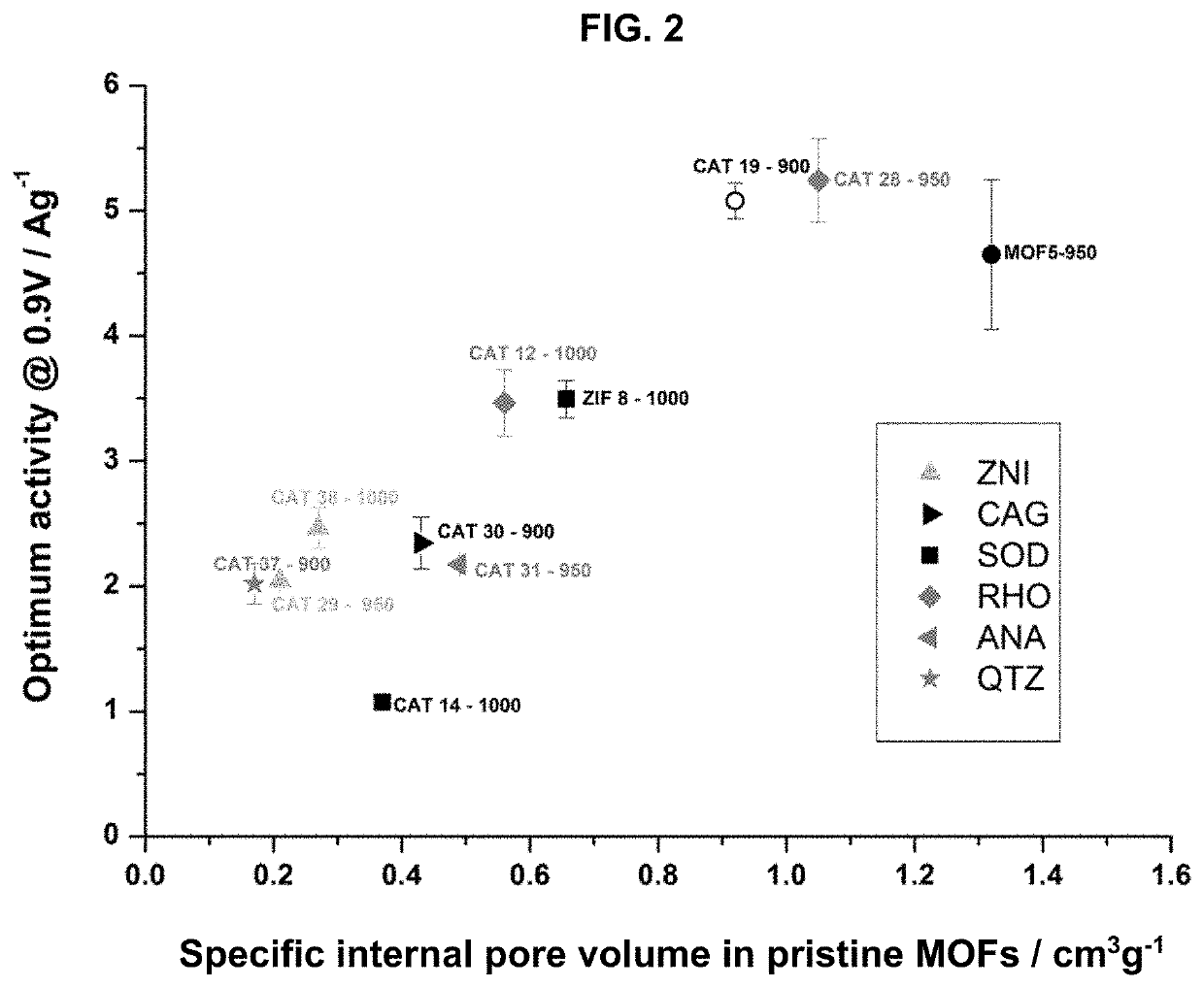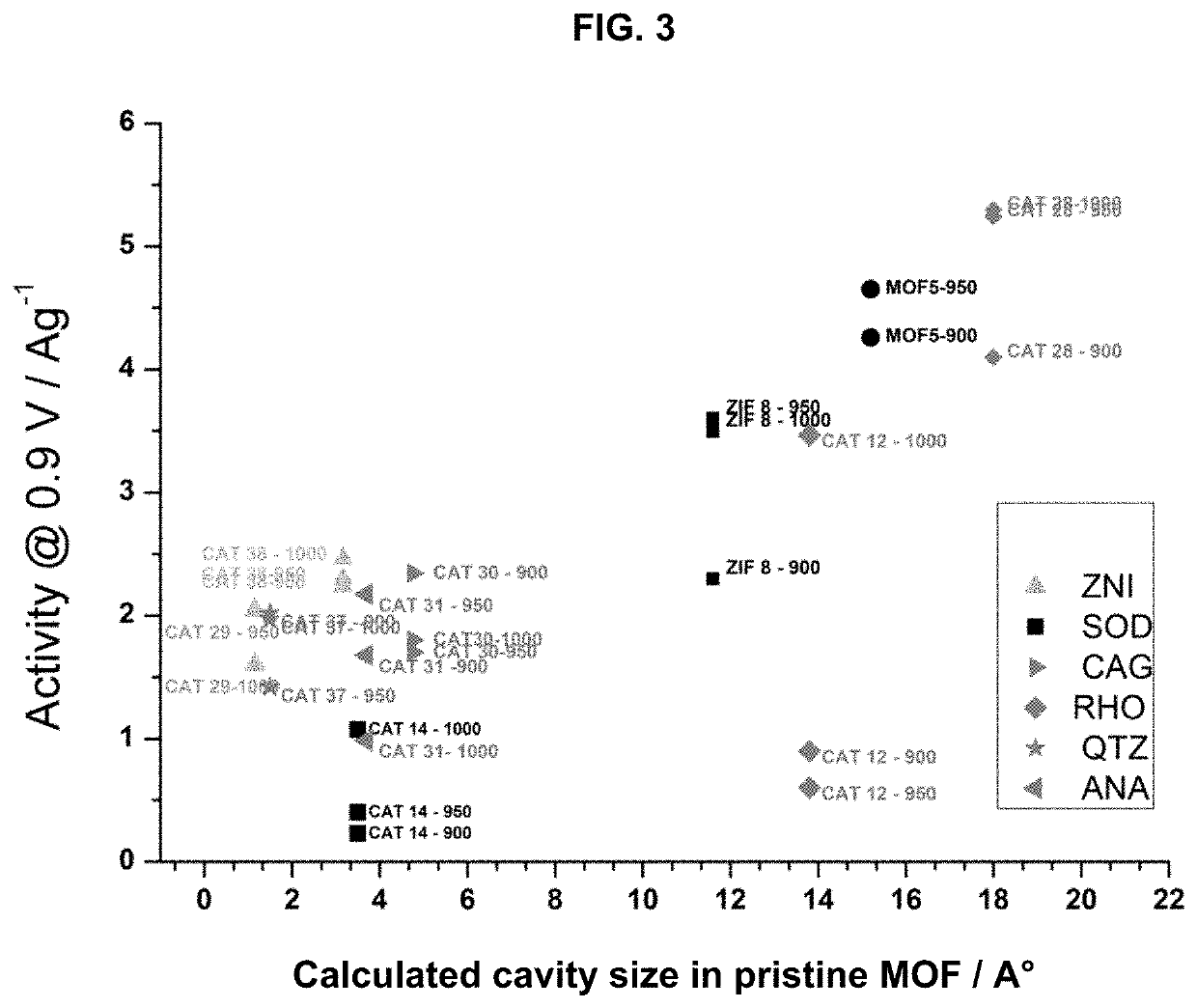Oxygen reduction reaction catalyst
a technology of reaction catalyst and oxygen reduction reaction, which is applied in the direction of organic compound/hydride/coordination complex catalyst, physical/chemical process catalyst, cell component, etc., can solve the problems of high cost of platinum, severe mass-transport limitations, and the power density performance obtained with state-of-the-art metal-n—c cathode cannot reach the level of pt-based catalys
- Summary
- Abstract
- Description
- Claims
- Application Information
AI Technical Summary
Benefits of technology
Problems solved by technology
Method used
Image
Examples
examples
[0085]The invention will now be described in relation to the following non-limiting examples.
[0086]Measurement Techniques
[0087]Specific Internal Pore Volume
[0088]The specific internal pore volume was calculated using crystallographic structures for each MOF. For that purpose, the crystal structure was first built following the single crystal data given in the literature for each solid. The geometry was optimised using Lennard Jones parameters and electrical charges to determine the positions of the atoms in the structure. In this case, the Universal Force Field (UFF) for Lennard Jones parameters was considered. Within the entire volume of optimized structures and following the strategy previously reported by Düren et al. (T. Duren, F. Millange, G. Férey, K. S. Walton, R. Q. Snurr, J. Phys. Chem. C, 2007, 111, 15350), a theoretical probe size of 0 Å was then used to determine the entire volume of the unit crystallographic cell. The unit cell is the smallest volume of a crystalline so...
PUM
| Property | Measurement | Unit |
|---|---|---|
| temperature | aaaaa | aaaaa |
| size | aaaaa | aaaaa |
| diameter | aaaaa | aaaaa |
Abstract
Description
Claims
Application Information
 Login to View More
Login to View More - R&D
- Intellectual Property
- Life Sciences
- Materials
- Tech Scout
- Unparalleled Data Quality
- Higher Quality Content
- 60% Fewer Hallucinations
Browse by: Latest US Patents, China's latest patents, Technical Efficacy Thesaurus, Application Domain, Technology Topic, Popular Technical Reports.
© 2025 PatSnap. All rights reserved.Legal|Privacy policy|Modern Slavery Act Transparency Statement|Sitemap|About US| Contact US: help@patsnap.com



